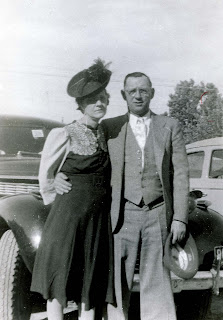The waitress was pleased. The customer liked her idea of soup and toast for an evening meal. This, she could manage. She was relieved and relaxed for the first time since the owner’s wife retired for the night.
“Crackers don’t do jack for me, as a rule,” the trucker customer continued. “But instead of your soup, toast puts me in mind of steak and eggs and home fries, along with coffee. Lots of coffee. I have a long night ahead of me.”
Her chipperness crashed on the floor. She refilled his cup and stalled. Earlier that evening she had already wasted a dozen eggs trying to make them over easy for another customer and was not ready to repeat the fiasco that transformed a flank steak into shoe leather.
Emily shifted from one foot to the other, a nervous habit she retained from her early childhood, particularly when she had been caught in a lie. She wasn’t lying this time, specifically, but she wasn’t being honest. She didn’t take this job to be the cook or manager. She was going to get married and wanted to earn a little bit of money before then by becoming a waitress. Yet it wasn’t her fault. The cook and lead waitress both quit the day before, leaving her at the machinations of a bunch of crude, hungry truck drivers and bar patrons. (The bar was attached to the diner.) She nearly quit herself, but the owner talked her into staying. And here she was, after a long evening of hard work, ruined meals and grouchy truckers, being asked once again to fail.
“How would you like your eggs?” she stammered. At least with scrambled, she had a chance.
“Over easy,” he replied.
She gulped, noticeably. “Yes, sir. Coming right up.”
“You by yourself,” he asked suddenly.
“No, she’s not,” the owner answered from the doorway, where he was simultaneously watching the interaction between the customer and waitress out of the corner of one eye, and for the recently expelled hooligan out of the other. “Emily, why don’t you go back to the kitchen and get working on that meal,” he directed. “I’ll be right there to help you out.”
The girl nodded and obediently went into the kitchen.
Ten minutes later he was back in the bar. Although the two of them had managed the meal, he knew it was barely acceptable. Besides, he broke the yolks of three eggs in the frying. And the steak was more done than the man ordered. Emily was even so flustered by the potatoes that she charred the toast. As he left the restaurant, noting the man’s disappointment with the meal, he noted to the waitress, “Now, Emily, don’t forget that tonight the a la mode comes free with an order of pie.” If the customer chose it, the owner knew that dessert would leave a much better taste in his mouth. At least, the peach pie was good. Of course, there were only three slices left.
Leta was alone at the bar, having exhausted all of any potential paramours for the time being and sensed his discontent.
“Having a rough night, Charlie?” she asked. Charlie wasn’t his name, but she liked how it was both respectful and friendly at the same time.
Before he could answer, Emily’s jealous boyfriend walked in.
“It just got rougher,” he answered. “Hey, pal!” he called, as friendly as he could stomach under the circumstances. “How you doin’?”
The young man stormed over, already in a slight rage, “Why the hell did you leave my girl all alone with that trucker?” he demanded. “Don’t you know what he could do to her?”
The young man was right in his face, and he had already been drinking.
“Watch your language, young fella,” he cautioned calmly, letting all of his tension run into his more than firm grip of the counter. “There’s a lady present.”
The owner gestured to Leta, and the boy (for he was little more than that) became instantly humbled.
“Sorry, ma’am,” he said. “I’m just a little worried about my fiancé in the restaurant all by herself with some truck driver.”
Leta looked him over first. Then she looked at him hard. She had seen him before, and she had observed many boys like him, boys that grew up to be men like the kind he expected the trucker in the restaurant to be. She looked at him just long enough to take control of the atmosphere in the room, and then she smiled.
“That’s understandable,” Leta agreed and gestured to the bar stool next to her. “But I know that Charlie is making sure that everything is fine. Come over here and have a beer—no, I think a fresh root beet—would be better. With me.”
“I can drink beer!” the boy cried defiantly. “I’m a man!”








